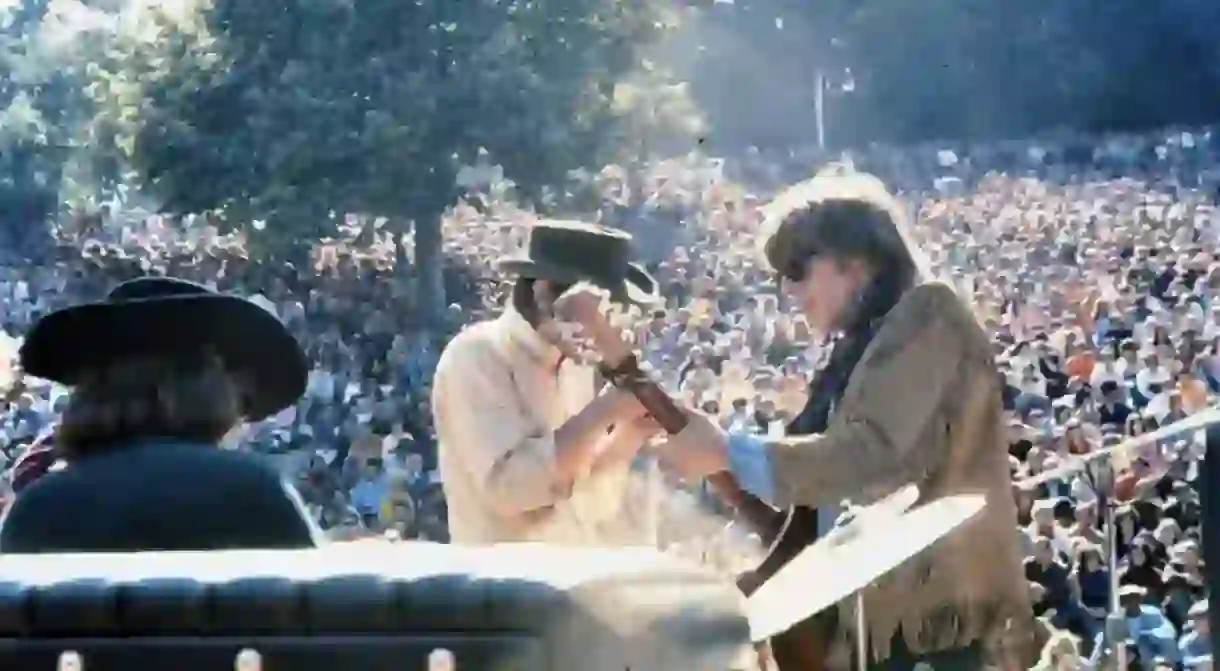What Was San Francisco's Summer Of Love?

In the summer of 1967, tens of thousands of young supporters of the counterculture flocked to the Haight-Ashbury district of San Francisco. Virtually taking over the neighborhood, these so-called ‘hippies’ brought vibrant colors and personalities to the city, filling it with music, drugs and free love in what would go down in history as the Summer of Love.
The hippie movement was an iconic part of the 1960s in America that emphasized values like freedom of sexuality and drug use, liberal politics, raised consciousness, environmental friendliness, individual empowerment and communal living. Students from the colleges in and around San Francisco took up the movement, also drawing inspiration from the Beat poets and jazz musicians of the era.

If one event could be held responsible for sparking the Summer of Love, it would be San Francisco’s “Human Be-In” that took place on January 14th, 1967. Inspired by the recent laws that banned the usage of LSD, the event was organized by artist Michael Bowen and advertised in the San Francisco Oracle, drawing anywhere from 20,000 to 30,000 people to Golden Gate Park The event featured a series of speakers, live music and epic amounts of LSD. Speakers included the likes of Timothy Leary, Richard Alpert, Allen Ginsberg, Gary Snyder, Michael McClure, Dick Lenore Kandel, Lawrence Ferlinghetti and Jerry Rubin. Music was performed by now-classic bands like Jefferson Airplane, The Grateful Dead, Big Brother and the Holding Company and Quicksilver Messenger Service.

The massive event drew national media attention. In turn, the media attention drew thousands of hippies from around the country to the streets of San Francisco. When school let out for the spring break of 1967, students began flocking to the Haight-Ashbury neighborhood. The local government, in an attempt to warn hippies to stay away from the city, unintentionally brought even more attention to the hippie haven. Soon, local residents responded by taking action to form the Council of the Summer of Love, establishing a name for the phenomenon. The Council was comprised of members of The Family Dog, The Straight Theatre, The Diggers, The San Francisco Oracle, and more locals, who anticipated problems stemming from the massive influx of people and hoped to help alleviate them. The Council established housing, sanitation, music and arts events, a free clinic for medical treatment and even a free store providing basic needs for the neighborhood visitors.
Throughout the summer, drugs ran rampant through the neighborhood. LSD was commonly used, advocated by the likes of Timothy Leary and Ken Kesey, in addition to marijuana, frequently advocated by the more organic-loving hippies for its natural high.

As drug-ridden people crowded into the neighborhood, the Haight-Ashbury began to deteriorate. The district became overcrowded, the streets filled with the hungry and the homeless, and crime rates soared. By the end of the summer, many people left to return to their schooling, bringing the Summer of Love out of its prime. In the wake of the event, those left in the neighborhood staged a mock funeral to commemorate the summer. The funeral, held on October 6, 1967, the funeral was titled ‘The Death of the Hippie.’













